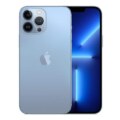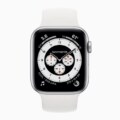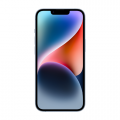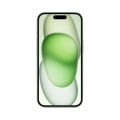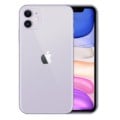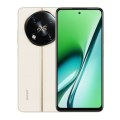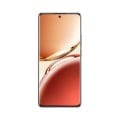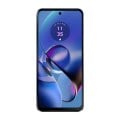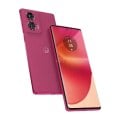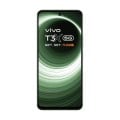Apple iPhone 15 Pro
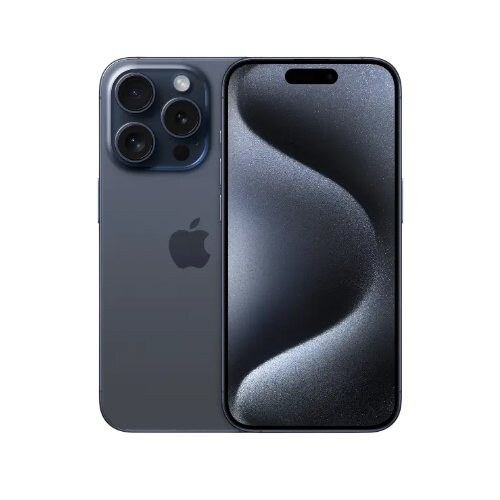

-
Processor: Apple A17 Pro
-
RAM: 8 GB
-
Storage: 128 GB, 256 GB, 512 GB, 1 TB
-
Display: 6.1 inches
-
Camera: Triple Camera
-
Battery: Li-Ion mAh
Apple iPhone 15 Pro - PRICE
-
 iPhone 15 Pro
iPhone 15 Pro
View Offer
Apple iPhone 15 Pro has been officially announced on Sept. 12, 2023.
Product Main Features:
The dimension of the device is 146.6 x 70.6 x 8.3 mm and it weighs 187 grams. It is built with a glass front (Corning-made glass), glass back (Corning-made glass), and titanium frame (grade 5). The display size is 6.1 inches LTPO Super Retina XDR OLED that provides a resolution of 1179 x 2556 pixels.
The smartphone is fueled with Li-Ion, non-removable + Wired, 50% in 30 min (advertised) + 15W wireless (MagSafe) + 7.5W wireless (Qi) battery. The sensors include Face ID, accelerometer, gyro, proximity, compass, barometer + Ultra Wideband 2 (UWB) support + Emergency SOS via satellite (SMS sending/receiving).
It is available in various colors including Black Titanium, White Titanium, Blue Titanium, and Natural Titanium. Apple iPhone 15 Pro is powered by Apple A17 Pro processor while the GPU is Apple GPU (6-core graphics). The device is packed with 8 GB RAM and 128 GB, 256 GB, 512 GB, 1 TB internal storage.
The smartphone features quad-camera: 48 MP (wide) + 12 MP (telephoto) + 12 MP (ultrawide) + TOF 3D LiDAR scanner (depth). On the front, there is a single camera: 12 MP (wide) + SL 3D, (depth/biometrics sensor). It also comes with Bluetooth 5.3, GPS (L1+L5), GLONASS, GALILEO, BDS, QZSS, NavIC, and NFC.
Apple iPhone 15 Pro - SPECIFICATIONS
General
-
ModelApple iPhone 15 Pro
-
ReleasedSeptember 2023
-
StatusAvailable
Design
-
Type Design Type called form factor refers to a mobile phone's size, shape, and style as well as the layout and position of major components of phone. There are three major form factors seen in mobile phones => bar phones, folding phones and sliding phones.Bar
-
Dimensions146.6 x 70.6 x 8.3 mm
-
Weight187 Grams
-
WaterproofIP68 dust/water resistant (up to 6m for 30 min)
Display
-
Display Type Display Technology => A number of display technologies and types used in mobile phones => TFT (Thin Film Transistor), IPS (In-Place Switching), OLED (Organic Light Emitting Diode), AMOLED (Active-Matrix Organic Light-Emitting Diode), Super AMOLED (an even advanced version of AMOLED), Resistive Touchscreen (Resistive touchscreens contain two layer of conductive material with a very small gap between them which acts as a resistance), Capacitive Touchsceen (Capacitive touchscreen technology consists of a layer of glass coated with a transparent conductor)LTPO Super Retina XDR OLED
-
Size6.1 inches
-
Resolution1179 x 2556 pixels
-
Display Colors Display Colors is refers to the number of different shades of colors that the screen is capable of displaying => 64K colors, 256K colors and 16 million colors, Obviously 16M is highest available range of colors and better than others.16M
-
Pixel Density Pixel Density (PPI) is refers to the concentration of pixels on a particular display, measured in pixels per inch (ppi). Pixel density is calculated by dividing the diagonal pixel resolution of a display by its diagonal size, higher pixel density better display quality.~461 PPI
-
Touch ScreenYes
-
Display Protection Display Protection => Gorilla Glass is a special alkali-aluminosilicate glass shield with exceptional damage resistance that helps protect mobile displays from scratches, drops, and bumps of everyday use, It is always better to go for a smartphone with Gorilla Glass for that added protection and peace of mind.Ceramic Shield glass
Hardware
-
CPU The main chipset of the device.Hexa-core (2x3.78 GHz + 4)
-
GPU GPU (Graphics Processing Unit) is a single-chip processor designed to rapidly manipulate and alter memory to accelerate the creation of images in a frame buffer intended for output to a display, This includes things such as lighting effects, object transformations, and 3D motion.Apple GPU (6-core graphics)
-
RAM (Memory) RAM (Random Access Memory) is a type of computer memory that can be accessed randomly, any byte of memory can be accessed without touching the preceding bytes that allows information to be stored and accessed quickly from random locations. RAM is the most common type of memory found in computer systems, smartphones, tablets and other electronic devices.8 GB
-
Internal Storage Internal Storage is a data storage space (flash memory) mostly used in smartphones, tablets and other electronic devices where operating system, apps, music, photos, videos, files and other user data Is stored.128 GB, 256 GB, 512 GB, 1 TB
-
Memory Card Slot Memory Card Slot is a special slot for inserting a memory card. Memory cards allow you to expand the phone's built-in memory, A memory card (sometimes called a flash memory card or a storage card) is a small storage medium used to store data such as text, pictures, audio, and video, for use on small, portable or remote computing devices such as mobile phones, mp3 players, digital cameras.No
-
Sensors Sensors are electronic components that detects and responds to some type of input from the physical environment. The specific input could be light, heat, motion, moisture, pressure and location, The output is generally a signal that is converted to use in computing systems, a location sensor, such as a GPS receiver is able to detect current location of your electronic device.Face ID, accelerometer, gyro, proximity, compass, barometer
Ultra Wideband 2 (UWB) support
Emergency SOS via satellite (SMS sending/receiving)
Software
-
Operating System OS => Every computer system run on a base software called Operating System (OS). Operating System controls all basic operations of the computer (such as smartphone, PDAs, tablet computers and other handheld devices). The Operating System allows the user to install and run third party applications (apps), apps are used to add new functionality to the device.iOS 17
Camera
-
Rear Camera Camera is able to capture photographs and usually videos, The most important characteristics of a camera are the resolution (measured in megapixels), lens focus type (fixed or automatic), higher megapixel cameras are known to capture higher quality photos, but not always a good measurement of the photos quality.48 MP (wide) + 12 MP (telephoto) + 12 MP (ultrawide) + TOF 3D LiDAR scanner (depth)
-
Image2160p
-
Video4K@24/25/30/60fps, 1080p@25/30/60/120/240fps, 10-bit HDR, Dolby Vision HDR (up to 60fps), ProRes, Cinematic mode (4K@24/30fps), 3D (spatial) video, stereo sound rec.
-
Flash Flash Light => There is commonly two types of flash lights are used in camera mobile phones, LED Flash (LED flash offers lower power consumption with drive circuitry that takes up very little room, LEDs can be strobed faster than any other light source), Xenon Flash (xenon flash produces an extremely intense full-spectrum white light for a very short duration)Dual-LED dual-tone flash
-
Front Camera12 MP + SL 3D, (depth/biometrics sensor)
Network
-
SIM SIM (Subscriber Identity Module) is a small card that contains mobile network subscriber's account information. This allows the phone using the card to attach to a mobile network. The SIM card is most commonly associated with GSM and UMTS mobile networks. Moving a SIM card from one phone to another allows a subscriber to switch mobile phones without having to contact their mobile network carrier. SIM cards can also be used by a phone to store limited amounts of data, such as phone numbers and text messages.Nano SIM
-
Dual SIMNano-SIM and eSIM - International / Dual eSIM with multiple numbers - USA / Dual SIM (Nano-SIM, dual stand-by) - China
Connectivity
-
Wi-fi Wi-Fi is a popular wireless networking technology using radio waves to provide high-speed network connections that allows devices to communicate without cords or cables, Wi-Fi is increasingly becoming the preferred mode of internet connectivity all over the world.Wi-Fi 802.11 a/b/g/n/ac/6e, dual-band, hotspot
-
USBType-C 3.0
-
GPS GPS The Global Positioning System is a satellite-based radio navigation system, GPS permits users to determine their position, velocity and the time 24 hours a day, in all weather, anywhere in the world, In order to locate your position, your device or GPS receiver must have a clear view of the sky.GPS (L1+L5), GLONASS, GALILEO, BDS, QZSS, NavIC
-
NFC NFC (Near field communication) is a set of standards for smartphones and similar devices to establish peer-to-peer radio communications with each other by touching them together or bringing them into proximity, usually no more than a few inches.Yes
-
Wireless Charging Wireless Charging (Inductive Charging) uses an electromagnetic field to transfer energy between two objects. This is usually done with a charging station. Energy is sent through an inductive coupling to an electrical device, which can then use that energy to charge batteries or run the device.Yes
-
Headphone JackNo
Battery
-
Capacity Battery CapacityLi-Ion + Wired, 50% in 30 min (advertised) + 15W wireless (MagSafe) + 7.5W wireless (Qi)
-
PlacementNon-removable
Media
-
Video PlaybackYes
-
Video OutYes
-
FM RadioNo
-
Ring TonesYes
-
LoudspeakerYes
-
HandsfreeYes
Data
-
4G LTE 4G LTE bands1, 2, 3, 4, 5, 7, 8, 12, 13, 17, 18, 19, 20, 25, 26, 28, 30, 32, 34, 38, 39, 40, 41, 42, 46, 48, 53, 66 - A3102
-
5G NR Bands1, 2, 3, 5, 7, 8, 12, 20, 25, 26, 28, 30, 38, 40, 41, 48, 53, 66, 70, 77, 78, 79 SA/NSA/Sub6 - A3102
-
SpeedHSPA, LTE-A, 5G, EV-DO Rev.A 3.1 Mbps

